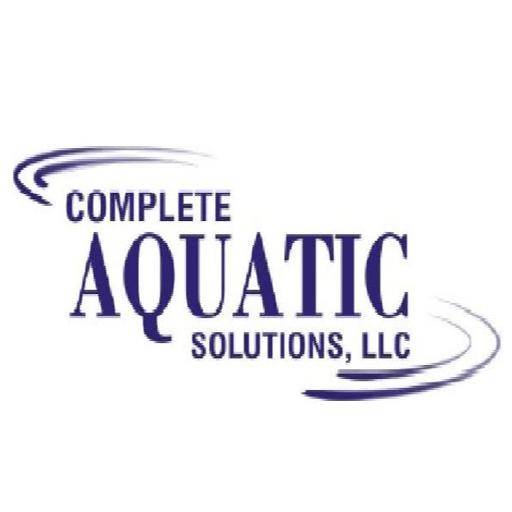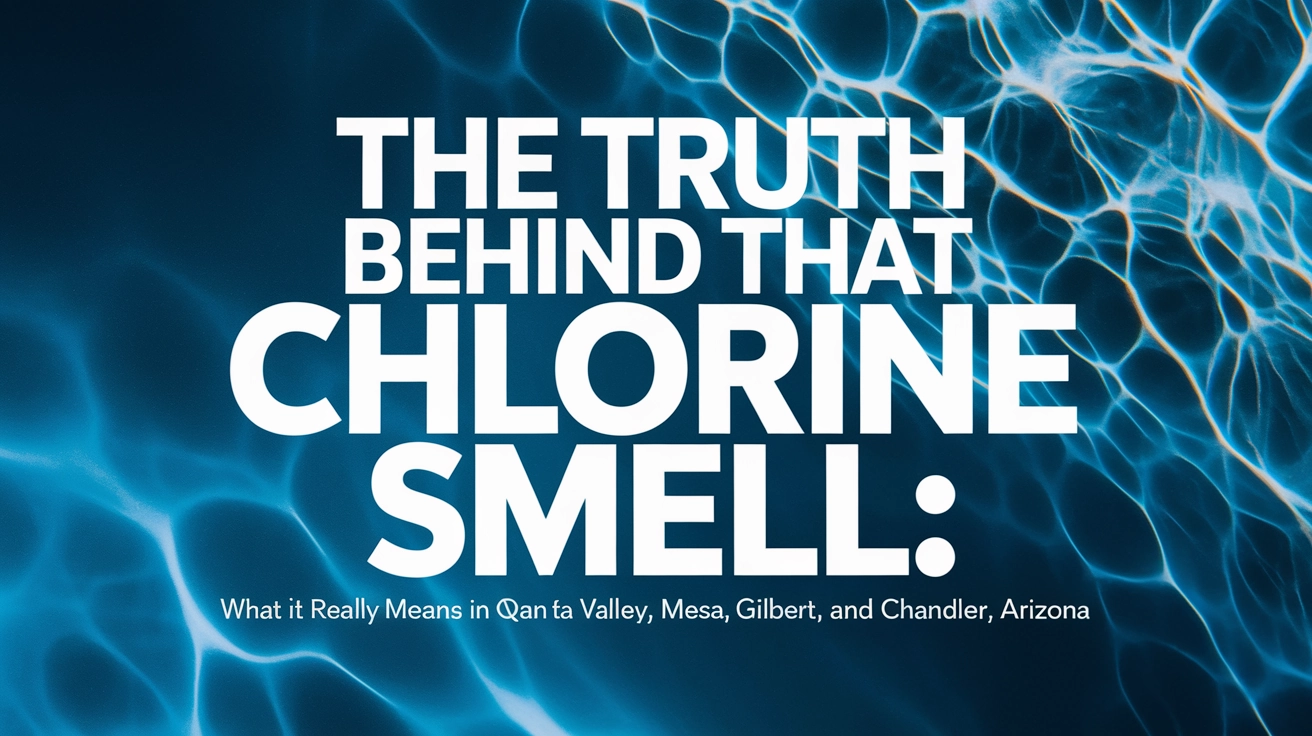The Great Pool Paradox: When "Too Much Chlorine" Actually Means Not Enough
If you're a pool owner in Queen Creek, San Tan Valley, Mesa, Gilbert, or Chandler, you've probably experienced this scenario: guests arrive for a weekend pool party, and as they approach your backyard oasis, someone inevitably comments, "Wow, there's a lot of chlorine in this pool!" They're reacting to that distinct "pool smell" that many of us grew up associating with clean, well-maintained swimming pools.
But here's the surprising truth that every Arizona pool owner should know: that strong "chlorine smell" doesn't indicate too much chlorine—it actually signals that your pool needs more chlorine.
Yes, you read that correctly. What you're smelling isn't chlorine at all, but compounds called chloramines. And their presence indicates a problem that needs addressing before you dive in.
Understanding the Chemistry Behind the Smell
To understand what's really happening in your pool water, we need to break down some basic pool chemistry that affects every swimming pool from Queen Creek to Chandler.
Free Chlorine vs. Combined Chlorine
When you add chlorine to your pool (whether through tablets, liquid, or granular chlorine), it dissolves in the water to form what's called "free chlorine." This free chlorine is what sanitizes your pool by killing bacteria, viruses, and other contaminants. When it's doing its job properly, free chlorine is essentially odorless.
So where does that smell come from?
Free chlorine is on a mission to oxidize (essentially, destroy) organic contaminants in your pool. These contaminants include:
- Sweat
- Oils from skin and sunscreen
- Urine
- Dead skin cells
- Leaves and other debris
- Cosmetics and hair products
When free chlorine attacks these contaminants, it combines with them to form chloramines, also known as "combined chlorine." These chloramines are what create that familiar "pool smell"—and they're a sign that your chlorine is being used up battling contamination.

The Science of Chloramines: What's Actually Happening in Your Arizona Pool
The formation of chloramines follows a predictable pattern in pools across Mesa, Gilbert, and the entire Valley. Here's what happens:
-
Free chlorine meets contaminants: When a swimmer enters your pool after a hot Arizona day, they bring contaminants with them, even if they've showered.
-
Chemical reaction occurs: Free chlorine molecules attack these contaminants by binding with nitrogen compounds in them.
-
Chloramines form: This chemical reaction creates chloramines (monochloramine, dichloramine, and trichloramine). Each has progressively stronger odors.
-
Chloramines build up: As more swimmers use the pool, more contamination enters the water, creating more chloramines while reducing your free chlorine levels.
-
The smell intensifies: The higher the concentration of chloramines, the stronger the "chlorine smell" becomes.
The irony is that as your pool develops a stronger "chlorine smell," it actually contains less effective free chlorine—meaning your pool is becoming less sanitized even as the smell suggests otherwise.
Why This Matters for Your Family's Health
This isn't just about chemistry; it's about the health and comfort of everyone who uses your pool in San Tan Valley or Queen Creek. Chloramines don't just smell unpleasant—they can cause real health issues:
- Eye irritation: Ever experienced red, burning eyes after swimming? That's chloramines, not chlorine.
- Skin irritation: Chloramines can cause itchy skin and exacerbate conditions like eczema.
- Respiratory problems: The air above a pool with high chloramine levels can trigger asthma attacks and breathing difficulties, especially in indoor pools.
- Decreased sanitation: As free chlorine gets used up forming chloramines, your pool becomes less effective at killing harmful bacteria and algae.
The intense summer heat in Chandler, Gilbert, and across the Phoenix metro area can accelerate these problems, as higher temperatures speed up chemical reactions and increase the rate at which chloramines form.
How to Test for Chloramines in Your Pool
The good news is that identifying whether your pool has a chloramine problem is quite simple with the right testing approach.
Most pool owners in Arizona regularly test for "total chlorine" and "free chlorine." The difference between these two measurements tells you everything you need to know:
Combined Chlorine (Chloramines) = Total Chlorine – Free Chlorine
For example:
- If your total chlorine reads 3.0 ppm and your free chlorine reads 2.8 ppm, your combined chlorine level is 0.2 ppm (very good).
- If your total chlorine reads 3.0 ppm but your free chlorine is only 1.0 ppm, your combined chlorine level is 2.0 ppm (problematic).

Generally, you want to keep combined chlorine levels below 0.5 ppm for optimal swimming conditions. When the level exceeds this, it's time to take action.
The Solution: "Shocking" Your Pool
When your Queen Creek or Mesa pool develops that strong "chlorine smell," the solution isn't to reduce chlorine—it's actually to add a significant amount of chlorine all at once, a process known as "shocking" the pool.
Shocking your pool introduces enough free chlorine to:
- Destroy existing chloramines through a process called "breakpoint chlorination"
- Eliminate the contaminants that were causing chloramines to form
- Restore proper sanitization levels
To effectively shock your pool, you need to raise the free chlorine level to about 10 times the combined chlorine level. This "breakpoint chlorination" destroys the chloramines and their associated smell.
For example, if you have 0.5 ppm of combined chlorine, you would need to add enough chlorine to raise the free chlorine level by about 5 ppm above your current level.
Shocking Tips for Arizona Pool Owners
The unique Arizona climate requires some special considerations when shocking your pool:
-
Shock in the evening: Our intense sun in Gilbert, Chandler, and throughout the Valley rapidly degrades chlorine. Shocking after sunset gives the chlorine time to work before the sun destroys it.
-
Run your pump overnight: After shocking, keep your pump running for at least 8 hours to ensure proper distribution of the chlorine.
-
Wait before swimming: Always wait until free chlorine levels drop below 5 ppm before allowing anyone to swim (usually 8-24 hours after shocking).
-
Shock more frequently in summer: The combination of higher temperatures and increased pool usage means Arizona pools often need more frequent shocking during our hottest months.

Preventing Chloramine Buildup in Your Arizona Pool
While shocking addresses an existing chloramine problem, preventing buildup in the first place is even better. Here are effective strategies for pool owners in Queen Creek, San Tan Valley, Mesa, Gilbert, and Chandler:
1. Encourage Pre-Swim Showers
A quick rinse before swimming can dramatically reduce the amount of contaminants entering your pool. Consider installing an outdoor shower near your pool area—practical and stylish in our desert landscape.
2. Regular Testing and Maintenance
The extreme heat in Arizona means pool chemistry can change rapidly. Test your water 2-3 times per week during summer months, checking both free and total chlorine levels. Maintain free chlorine between 1-3 ppm for optimal sanitation.
3. Proper Filtration
Run your filter system for adequate time—typically 8-12 hours daily during Arizona summers. Consider upgrading to a more efficient filter system if you consistently struggle with water quality. Our team at Complete Aquatic Solutions specializes in filter cleaning and upgrades for optimal performance.
4. Regular Water Replacement
Even with perfect chemistry, pool water eventually accumulates dissolved solids that can't be filtered out. Consider partially draining and refilling your pool annually, especially after the monsoon season when dust and debris have accumulated. Our drain and fill service can handle this task efficiently.
5. Professional Water Analysis
Home test kits are good for routine monitoring, but a professional water analysis provides deeper insights into your pool's chemistry. At Complete Aquatic Solutions, we offer comprehensive water testing services for pool owners throughout Queen Creek, San Tan Valley, Mesa, Gilbert, and Chandler.
When to Call the Professionals
If you're consistently battling chloramine issues despite proper shocking and preventive measures, it might be time to call in the experts. This could indicate underlying problems with:
- Your pool's circulation system
- The efficacy of your filter
- Overall water balance issues
- Equipment that isn't operating correctly
Our team at Complete Aquatic Solutions provides comprehensive pool services throughout the East Valley, addressing these and other issues to keep your pool crystal clear and truly clean—not just "chlorine smelling."
Conclusion: A Truly Clean Pool Shouldn't Smell Like "Chlorine"
The next time you catch that strong "chlorine smell" wafting from your Queen Creek, San Tan Valley, Mesa, Gilbert, or Chandler pool, remember: what you're actually smelling is a sign that your pool needs attention, not that it's too clean.
A properly maintained pool with adequate free chlorine should have minimal odor. The absence of that strong smell isn't just more pleasant—it indicates a healthier swimming environment for you and your family.
By understanding the true relationship between chlorine, chloramines, and that distinctive pool smell, you're now equipped to maintain better water quality and challenge one of swimming pools' most persistent myths.
For professional assistance with any aspect of pool maintenance, testing, or equipment repair, contact Complete Aquatic Solutions. We're your local experts serving the East Valley with the knowledge and experience to keep your pool truly clean—and free from that misleading "chlorine smell."


0 Comments